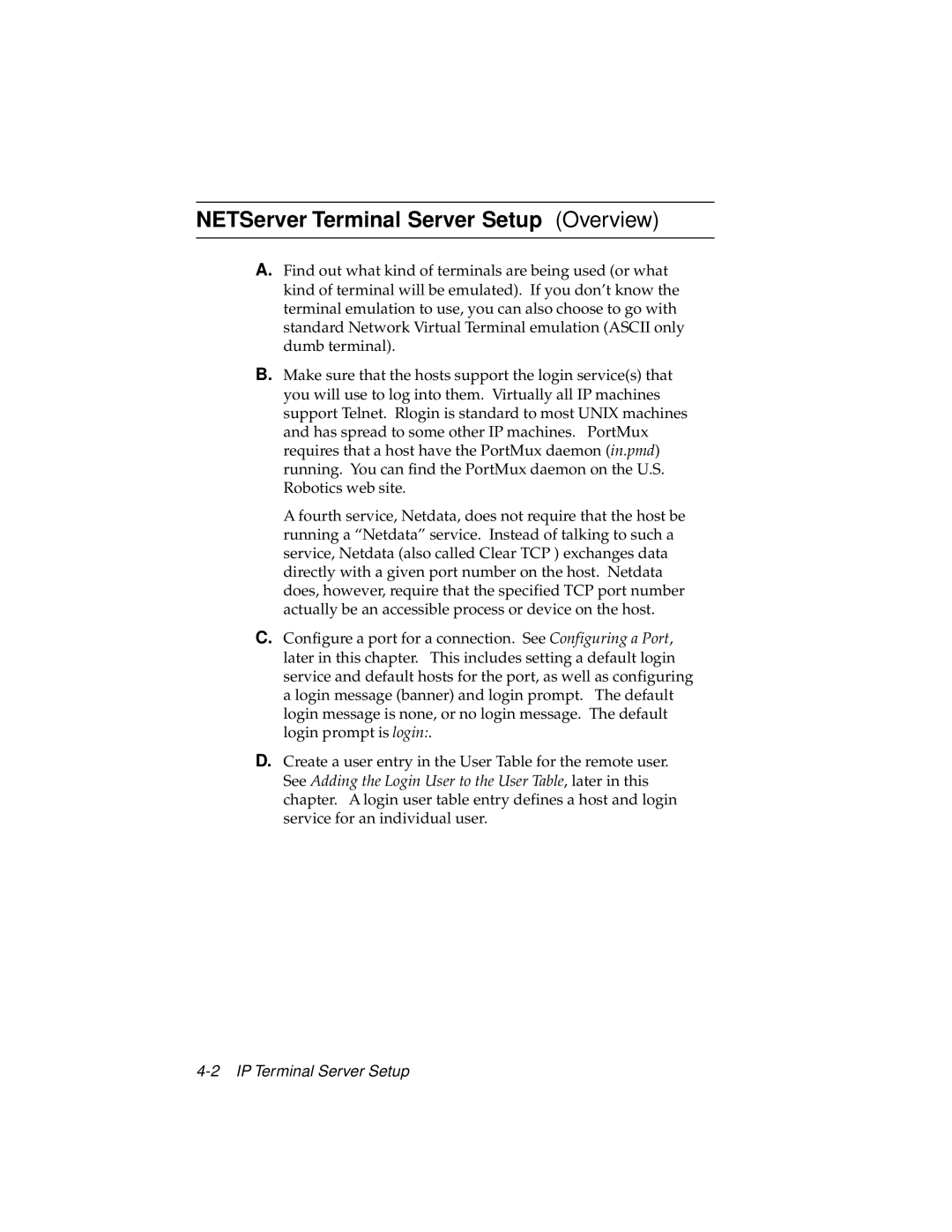NETServer Terminal Server Setup (Overview)
A.Find out what kind of terminals are being used (or what kind of terminal will be emulated). If you don’t know the terminal emulation to use, you can also choose to go with standard Network Virtual Terminal emulation (ASCII only dumb terminal).
B.Make sure that the hosts support the login service(s) that you will use to log into them. Virtually all IP machines support Telnet. Rlogin is standard to most UNIX machines and has spread to some other IP machines. PortMux requires that a host have the PortMux daemon (in.pmd) running. You can find the PortMux daemon on the U.S. Robotics web site.
A fourth service, Netdata, does not require that the host be running a “Netdata” service. Instead of talking to such a service, Netdata (also called Clear TCP ) exchanges data directly with a given port number on the host. Netdata does, however, require that the specified TCP port number actually be an accessible process or device on the host.
C.Configure a port for a connection. See Configuring a Port, later in this chapter. This includes setting a default login service and default hosts for the port, as well as configuring a login message (banner) and login prompt. The default login message is none, or no login message. The default login prompt is login:.
D.Create a user entry in the User Table for the remote user. See Adding the Login User to the User Table, later in this chapter. A login user table entry defines a host and login service for an individual user.
